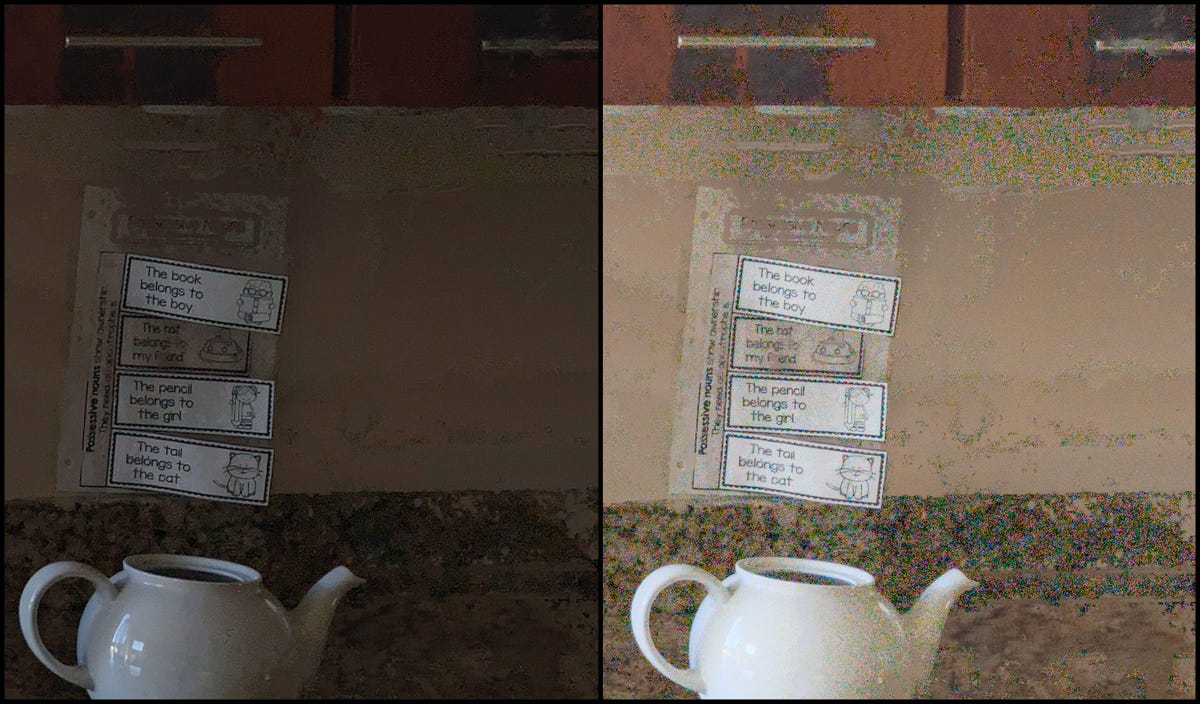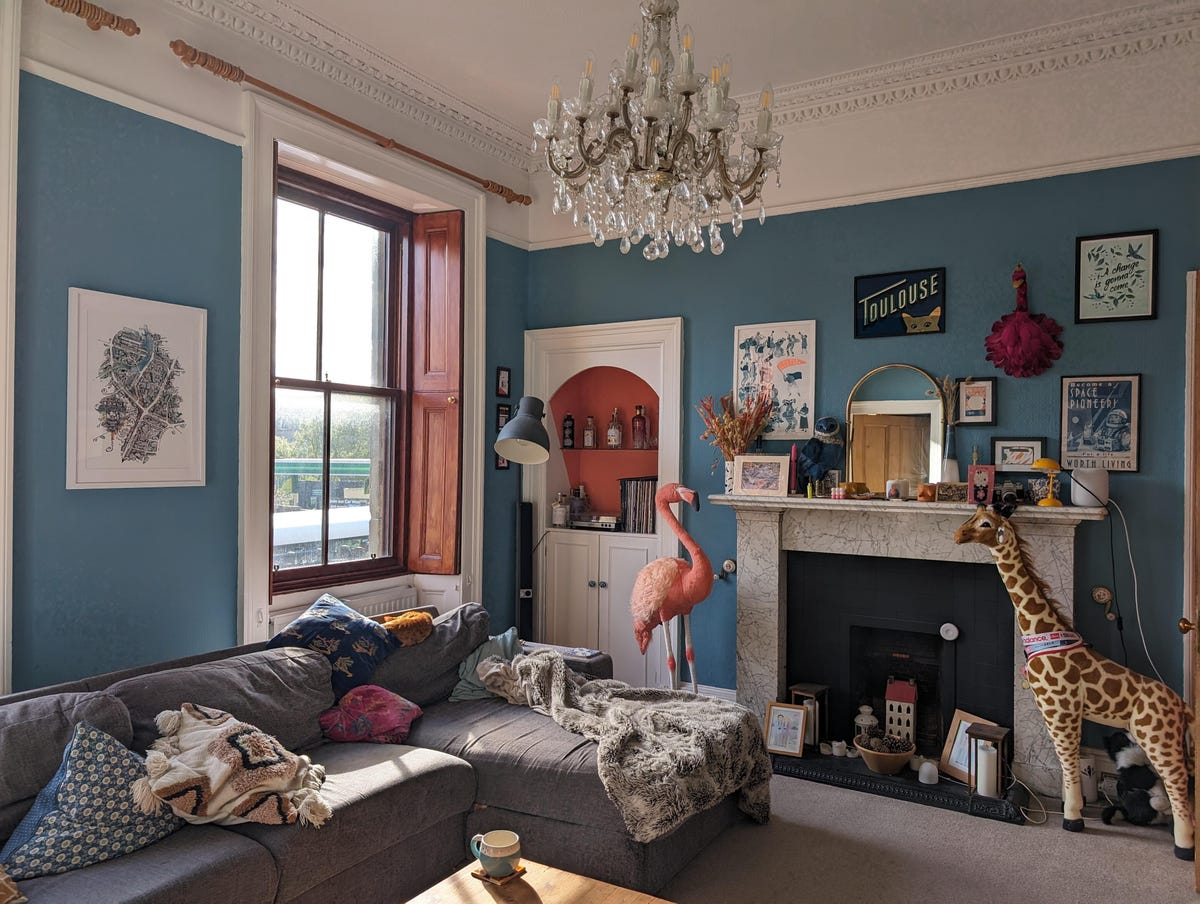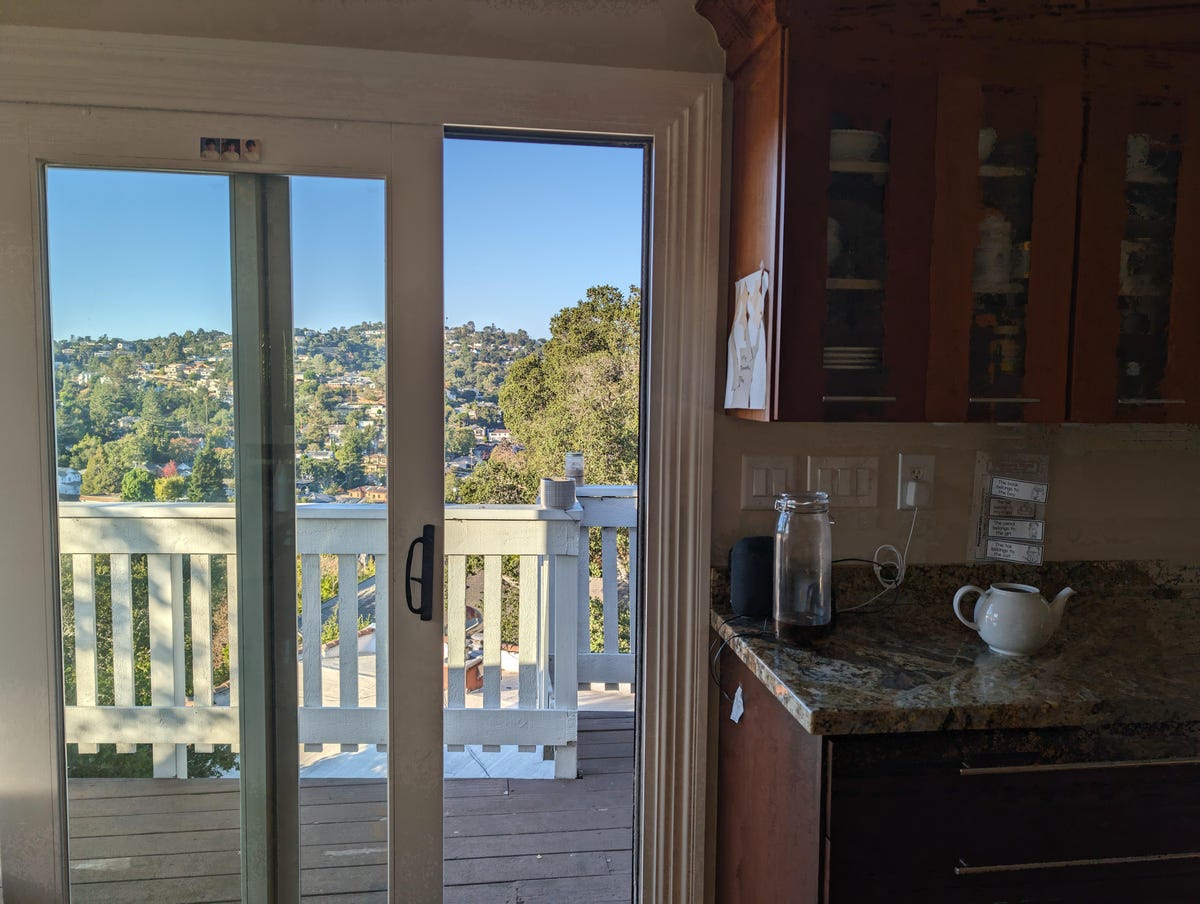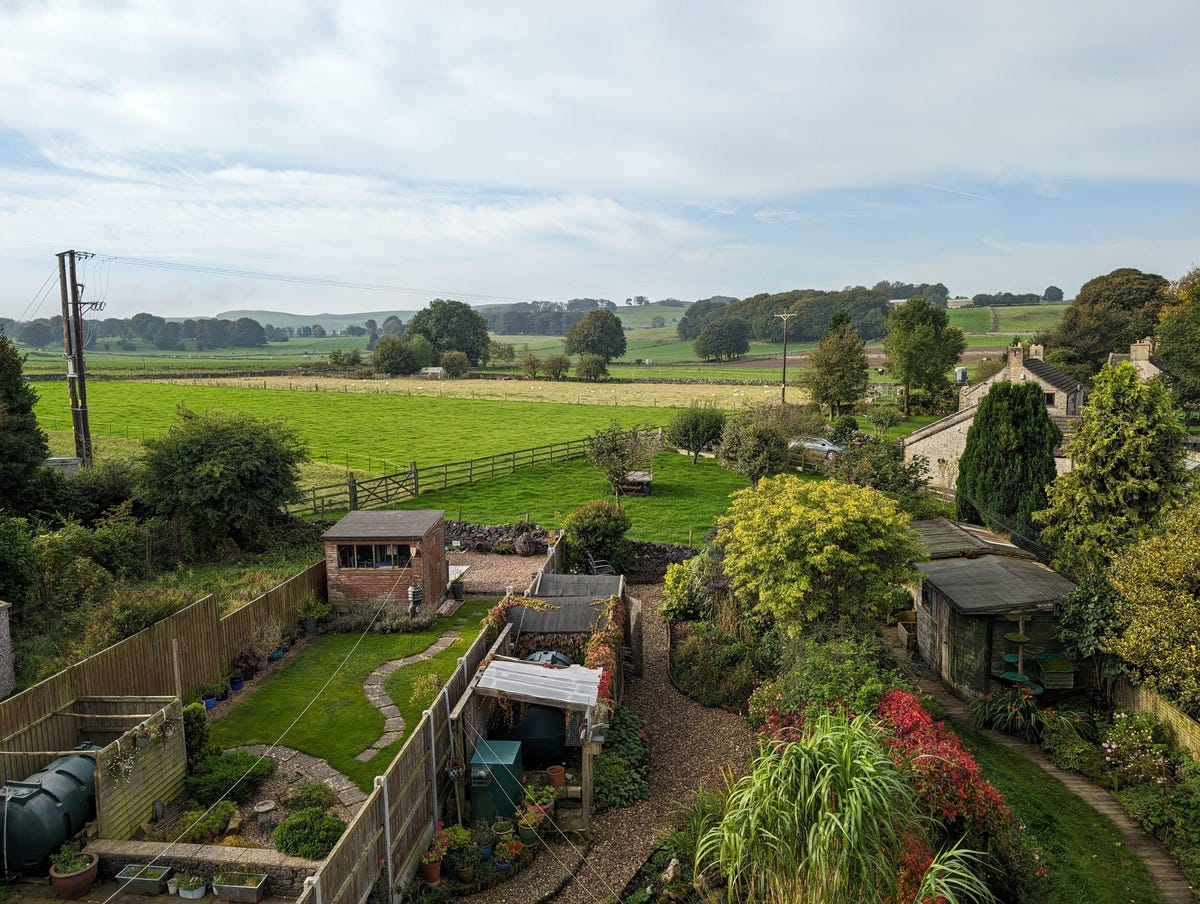Technologies
Pixel 8 Pro Ongoing Review: Google Plans Fix to Address Camera Issues
Google knows where the problem lies and expects a fix in «very soon,» the company told CNET.
Editor’s note: This is an ongoing review that was originally published on Oct. 11. The latest update was published on Oct. 14.
We found problems with the Google Pixel 8 Pro in our early testing. The most notable issues were with the camera, which exhibited odd artifacts, especially in high-contrast situations. We’ve now spent over a week testing multiple models of the phone across the globe. We’ve taken hundreds of images and been able to gain a deeper understanding of the issues we’ve seen.
CNET reporter Stephen Shankland unpacked many of the Pixel 8 Pro’s issues and elaborated on what might be causing them. It’s largely a software problem, and Google knows where the problem lies and expects a fix «very soon,» the company told CNET on Thursday.
While we’re still seeing the same image-processing problems after more testing, we’ve also amassed numerous examples where the Pixel 8 Pro performed extremely well. We tested it in daylight, at night, and how it compares to rivals including the iPhone 15 Pro and the older Pixel 7 Pro.
Right now, we’re confident that the camera issues are relatively minor and that many of you who’ve already bought the phone may not even notice. But a $999 (£999, AU$1,699) phone should not have problems like these, so we’re postponing our final verdict until we see the difference the upcoming software update makes.
Below, you’ll find an ongoing review of the phone with my opinions on the design, display, processor and battery, informed by multiple editors’ testing. I’ll continue updating this review over the coming days as I retest the phone, especially the camera. We haven’t found any of these issues testing the regular Pixel 8 and, in fact, really like it.
What does this mean for you? If you’re looking to buy the Pixel 8 Pro, we advise you to wait. Keep your eye on this review as it develops and wait for our final verdict.
A week-plus with the Pixel 8 Pro
The Pixel 8 Pro is Google’s latest flagship phone, and as such packs a host of refinements over its predecessor, including a new processor, cameras and more AI skills. I loved the older Pixel 7 Pro and believed it was one of the best Android phones money could buy. The 8 Pro has a lot to live up to.
Putting aside the camera problems I’ve experienced, the Pixel 8 Pro has plenty going for it, from its solid gaming performance, its decent battery life and its slick Android 14 interface. But the most important change is that Google is committing to seven years of software updates for the phone, a huge boost over its previous offering and much more than most other Android manufacturers. It means this phone should still be going strong in 2030, if it lives up to Google’s claims.
The triple rear-camera setup got some updates, including wider apertures on both the main and telephoto lenses and higher resolution for the ultrawide lens.
But it’s the camera that’s been most problematic for us in our testing so far and needs to be resolved before we could recommend it. Several of our test images with high-contrast scenes show bizarre-looking image noise and artifacts in the shadowy areas, along with extremely aggressive software smoothing on areas that should maintain detail. I found similar issues in night mode photos, too.
Shankland’s Pixel 8 Pro camera analysis dives more deeply into the cause of some of these problems. It essentially boils down to how the software tries to blend multiple image exposures together and doesn’t do a particularly neat job at it. However, software problems can be remedied and Google has said that an update is coming soon that should address the worst of our concerns.

The phone’s DNG raw files tend to come out worse, with increased image noise and a weird muddiness to the scene that needs heavy corrections. It’s likely, though, that this is exacerbated by poor compatibility with raw editing apps like Lightroom and may be rectified as Adobe support rolls out.




There’s a 1- to 2- second delay I encountered when taking 50-megapixel raw images, which likely won’t be going away. Google explained that this delay is simply due to the phone having to take multiple, massive files and piece them together. It’s a highly complicated process, and it’s clearly a burden for the Tensor G3 processor. Indeed, shooting raw at 12 megapixels has no such delay. As a result, the high-res mode is best used for static landscapes, not fast-paced shots of your kids playing on the beach. I hope that next year’s Pixel 9 Pro has a more powerful chip that can speed up this process.
It’s not all bad, though. Many images taken with the wide, ultrawide and 5x zoom lenses have come out extremely well in good lighting, lower-light indoor shots are bright and sharp, and I’ve had good success with night-time street images too. I also enjoyed using the long exposure mode to add some ethereal blurred movement effects to some photos.
The Pixel 7 Pro had a superb camera that was capable of taking glorious images with any of its lenses. While the Pixel 8 Pro clearly has some teething troubles, both Shankland and I are confident that fixes will come that will help make this a much more well-rounded camera for both amateurs and enthusiasts alike.


Design and display
Physically, it’s clear to see the Pixel 8 Pro’s family resemblance to its predecessors, with the big camera bar across the back. It’s not a big design departure from last year’s model, but that rear glass panel is now frosted rather than glossy, which gives it a softer feel to hold while making it a little less prone to fingerprints. I don’t think it looks quite as premium or classy as the Pixel 7 Pro’s sage and gold design, at least not in the plain black variant I’ve been given to test.
The camera bar sticks out a long way — around 4 millimeters in fact, which is even more than on the 7 Pro. The 8 Pro is comfortable to hold, but I do sometimes find it catches when I’m trying to slide it into my jeans pocket. I’m nitpicking here, but it’s one of those things that could become more annoying over time. With a case attached that reduces the height difference between the body and the bar, the problem goes away.
The frame is made in part from recycled aluminum (just like in older Pixel phones) and the phone is IP68 rated for water-resistance, which will keep it safe from spilled drinks or when taking calls in the rain. The 6.7-inch display is the same size as on the Pixel 7 Pro. It’s bright and vibrant and easily does justice to whatever colorful YouTube or Netflix video you want to watch on the bus.
Temperature sensor
One little tweak on the back is a small circle next to the camera flash that houses a brand new feature: a temperature sensor. It allows the phone to give temperature readings from objects or surfaces. It’s easy enough to do, just fire up the temperature app and hold the phone about 5 centimeters from your object, as though you’re taking a close-up photo. Tap the screen and it’ll give you a readout on how hot that object is.
The idea is that you can use it to test the temperature of drinks before you take a big gulp, or to make sure that piece of peach pie isn’t hotter than the sun before you shovel it into your face and burn your mouth to cinders. It works well in my testing so far, with it fairly accurately showing the increase in temperature on my kettle as I boiled water for a cup of tea.
And while I can imagine it sometimes being helpful — parents could use it to check the temperature of a baby’s bottle, for example — I think its real-world application is limited. It feels like a feature that’s been shoehorned in to act as a differentiator from the competition. Heck, it can’t even take your body temperature, though Google is seeking clearance from the US FDA to use it for that purpose. And sure, the Pixel 8 Pro now has a feature that the iPhone 15 doesn’t, but is it really a feature you care about? I’m not sure that I do.
Processor and Android 14
The Pixel 8 Pro comes with Google’s latest homemade processor, the Tensor G3, but we can’t yet tell you how it performs. At the time of writing I’m unable to install any kind of benchmarking apps to directly compare it to its rivals, but anecdotally it seems like a capable chip. Navigation around the Android 14 interface is swift: Apps open without any delays and multitasking between open apps is a breeze.
Graphically demanding games like Genshin Impact, PUBG and Real Racing 3 all play with buttery-smooth frame rates at maximum graphics settings. I’ve yet to find anything that really slows the phone down. The Tensor G3 chipset also enables AI features, but their quality is uneven, with some taking so long to process that I simply didn’t bother (more on these below).
The big advancement we can confirm is longevity. Google committed to providing seven years of software and security updates to the Pixel 8 series, which is a big improvement over the four years it previously offered. By comparison, Samsung offers four years of software and five of security updates. Longer security support times are a huge way of reducing the environmental impact of phones, as the hardware on older models is often still working fine, but it’s simply not safe to keep using devices with outdated software.
Google’s software commitment means the Pixel 8 Pro should still be going strong in 2030, which is the longest of any major Android manufacturer and only really rivaled by Fairphone, which offers eight years of security updates on its latest Fairphone 5. It’s good to see Google extending its support period and I hope it encourages more manufacturers to do the same.
The Pixel 8 Pro launches with Android 14 which itself isn’t that different from Android 13, with a near-identical visual look that includes various ways to customize elements of the interface. Google has sprinkled in some additional AI features throughout though, including a new generative AI wallpaper creator.
The tool lets you select from a variety of prompts, including object words such as «bicycle» or «lighthouse,» texture words like «wood» or «bamboo» and various color and art style words to create a unique backdrop. It’s fun to play with and I’ve enjoyed experimenting with different prompt combinations to find images I like. I don’t always love the results — sometimes the AI hasn’t done a great job — and only being able to choose from a set of predefined prompts means it’s not open to the sort of wild infinite customization you might expect from generative AI.
Google has woven in AI features elsewhere into the phone, including call screening, the ability to summarize articles in web pages (both of which are exclusive to the US at launch) and better speech-to-text and translation tools. But it’s also used for image editing, with AI tools letting you selectively edit the sky in a landscape photo, make objects or people bigger or smaller in the frame or remove them completely. The results don’t always look great — at least not to my eye as a professional photographer — but they can be fun ways of tweaking more casual snaps.


I found that it took between 13 and 18 seconds for the AI to make each edit, which felt like a frustratingly long time to wait. It remains to be seen whether that’s down to the processor performance or if it’s a software issue that could be remedied. In my time with the phone, I found these delays long enough to put me off wanting to play around further. On the Pixel 8, however, these edits generally took around 5 seconds.
There’s also a new tool called Best Take, which takes a burst of images and blends them into one shot where everyone should look their best by automatically picking the best faces of a group of subjects. I’ve not found this useful in my time with the phone. It requires at least six different images of a group of people for the AI to choose from and I normally just take one or two of my friends, which isn’t enough. To make use of it, I’d have to learn to start using burst mode more often when taking group shots, which feels like I’m having to create a problem for this feature to solve.
Then again, my colleague Patrick Holland enjoyed putting the feature to use in his review of the smaller Pixel 8. Patrick found it worked well in his shots, with a mostly seamless replacement of people’s faces in the final image. Your experience with it may vary depending on how you use your phone’s camera, so take my opinion here with a grain of salt.
Battery
Stuffed inside the Pixel 8 Pro is a 5,050-mAh battery, which put in a decent performance on our various battery drain tests. After 1 hour of streaming a YouTube video at max brightness the phone had dropped from full to 97% remaining, which is good. After the third hour it had dropped to 84% which is below what we’ve seen from the iPhone 15 series, but in line with the Galaxy S23.
It’s a demanding test and in everyday use you shouldn’t struggle to get through a whole day of mixed use. Just avoid spending hours streaming video or playing demanding games if you want to have juice left to call a cab home after your night on the town. As with most phones, though, you’ll almost certainly want to give it a full charge when you go to bed each night.
Should you buy the Pixel 8 Pro?
After deeper testing and conversations with Google’s Pixel team, we’re increasingly confident that the early camera issues we experienced are largely software-based. Imminent updates should resolve much of what we’ve seen.
Even though photos look good in most situations, these issues are problematic for the audience that Google is pitching the Pixel 8 Pro towards, which is pro photographers. Still, we will continue to test this phone and reserve judgment until we’ve used the camera with its new software.
Technologies
Can Chemicals Turn My Orange iPhone 17 Pink? Here’s What I Found Out
There are reports that some cosmic orange iPhone 17 Pro handsets are turning pink. I threw chemicals at my iPhone to see what would happen.

A recent Reddit thread suggests that it’s possible for a cosmic orange iPhone 17 Pro to turn vibrant pink. As PCMag’s Eric Zeman noted, it’s likely that the phone has been discolored by cleaning substances that affected the finish, turning it from vibrant orange to a wild hot pink. Sure, this might technically be a fault, but in all honesty I love pink phones and the idea of a hot pink iPhone 17 Pro filled me with joy. So I wanted to see if I could test the theory and see just what color-changing effects various household cleaners might have on my phone.
It’s important to note here that the iPhone 17 Pro I used was bought by CNET for the purposes of testing. Had I paid over $1,000 of my own money I wouldn’t be so reckless in smearing it with chemicals that could potentially irreparably harm it. And you shouldn’t either. If you need to clean your phone, do it safely. Disclaimer aside, let’s dive in.
The chemicals
I bought two chemicals to test this out. Zeman explains that it may be oxidation that caused the color to change and that hydrogen peroxide could do this. I couldn’t find this over the counter in the UK, so I instead bought an «oxy-active» stain remover spray that, among other things, contains «oxygen-based bleaching agents» which sounded ideal. Apple also clearly states «don’t use products containing bleach or hydrogen peroxide» on its support page so, naturally, I bought some thick bleach too.
Oxy application
I started by spraying the oxy cleaner on a microfiber cloth until it was noticeably wet from the liquid and then liberally applied this all over the rear of the iPhone. The Reddit user with the affected phone showed that it only affected the metal parts, not the glass back panel, so I made sure to focus my attention on the sides and camera bar.
With the phone well and truly doused in chemicals that have no business being anywhere near a phone, I left it to sit and think about what it had done for 30 minutes — after which time I wiped it dry and took a close inspection. Disappointingly, my phone was still factory orange, rather than «what the hell have you done to your phone» pink. Time to move on.
Bleach blast
I opened the bleach and trying hard not to think about my days as a middle school cleaner, applied a liberal blob of the stuff to a cloth and smeared it over the defenceless phone, concentrating again on the metal areas. I definitely should have worn protective gloves for all of this so please make sure you take better care of yourself than I do if you do anything with bleach.
Again, I gave it a 30-minute settling in period before cleaning it off and inspecting the results.
The phone remained as orange as ever, looking as box fresh as it was the day before when it was, indeed, box fresh. The orange color hadn’t changed and now almost 24 hours later there’s still no sign of discoloration of any kind.
Is the pink iPhone 17 real?
I can’t say with any certainty whether the Reddit user’s images of a pink iPhone 17 Pro are real or not. The cuddly human side of me wants to take them at their word, while the journalist in me is sceptical. What I can say with certainty is that putting your orange iPhone into close contact with household cleaning products isn’t going to win you a funky, ultra-rare pink hue that you could sell on eBay for a small fortune.
It’s possible that using pure peroxide could be the thing that does it, but to be honest, if you’re going out of your way to throw industrial-grade chemicals at your phone then you may as well just directly try and dye it. My goal here was to see how susceptible the orange model is to everyday household cleaners such as kitchen cleaner or bathroom bleach — the sort of things it might naturally come into contact with in routine use. And what I’ve found is that, no, it won’t ruin the nice orange color. But it’s probably still not good for your phone.
Technologies
My Teen Loves Her Apple AirPods Pro 2 and You Will Too With This $100 Off Deal for Black Friday
Apple’s AirPods Pro 2 have everything you could want from a pair of wireless earbuds, plus a steep discount.

Black Friday deals: The Apple AirPods Pro 2 are some of the best personal audio gear on the market, even if they aren’t the latest model anymore. Sure, Apple’s AirPods Pro 3 are the newest earbuds in the lineup but the AirPods Pro 2 are still an excellent pick for most people.
They’re an even better buy this week during early Black Friday sales when you can get your hands on a pair of Apple AirPods Pro 2 at a discount. Right now, Walmart is shaving a massive $100 off the AirPods Pro 2, dropping the cost to $139. That’s one of the lowest prices we’ve seen — but we doubt this deal will stick around for long.
Don’t miss any of our unbiased tech content and lab-based reviews. Add CNET as a preferred Google source.
HEADPHONE DEALS OF THE WEEK
-
$248 (save $152)
-
$298 (save $131)
-
$170 (save $180)
-
$250 (save $200)
CNET’s key takeaways
- You can get these amazing earbuds for just $139 right now at Walmart.
- My teenager loves everything about them.
- The sound quality is exceptional.
- The noise cancellation can help give you some peace, even in a busy home.
My 13-year-old daughter loves her music and her privacy, and for years she has wanted a pair of AirPods. They’re not cheap so I’ve only been getting her more budget options, like the Amazon Echo Buds, as a result. These kept seemingly disappearing, though, so I finally ponied up for the AirPods Pro 2.
I picked them up during last year’s sales, and they were definitely well-received. She’s happy, she uses them every day, and she hasn’t lost them yet. The AirPods Pro 2 are currently on sale at Walmart for $139, a nice price for a high-quality pair like these, and one of the lowest we’ve seen.
What about the AirPods Pro 3?
The AirPods Pro 3 weren’t available at the time I bought the AirPods Pro 2, but they were rumored, and I didn’t wait to see what they offered. As CNET’s resident headphone expert, David Carnoy summarized in his AirPods Pro 3 and Pro 3 comparison, the newer model is «significantly improved in the four most important areas: fit, sound quality, noise cancellation and battery life.» They also have heart-rate monitoring, like the Beats Powerbeats Pro 2.
Hey, did you know? CNET Deals texts are free, easy and save you money.
While these are undoubtedly all important things, a lot of people aren’t going to notice the differences or make the most of the new features. With the AirPods Pro 3 being newer, they’re on a smaller sale and are currently available at Amazon for $220, which is $30 off the list price.
Why I didn’t get the AirPods 4 instead
Why did I choose AirPods Pro 2 instead of the AirPods 4 with ANC? First, as I mentioned in another article about a different pair of earbuds I bought, I think sealed, in-ear buds are better than open-design models like the AirPods 4. The seal creates another layer of noise isolation and contributes to superior sound quality, and if you want to pay attention to the world you can always engage ambient sound mode, which Apple calls transparency mode.
Also a factor was that, at the time, Carnoy considered the Pro 2 the best Apple noise-canceling wireless earbuds: «While we’re quite impressed with those new models — and with the AirPods 4 ANC in particular — the AirPods Pro 2 remain arguably the best Apple AirPods you can buy if you don’t mind having silicone ear tips jammed in your ears,» he said.
My daughter uses earplugs all the time to help her sleep, so she definitely qualifies as somebody who’s comfortable stuffing things in her ears. Like her fingers, when I start using words like «sigma,» «skibidi» and «relatable» to try to relate to her.
I asked Carnoy about the Pro 2s potentially not fitting in her kid-size ears and he reassured me that the range of eartips that come with the Pro 2s «now include XS, so they should fit.»
Do AirPods make a great gift?
It took me years to finally understand, but yes, for someone looking for wireless earbuds, AirPods — especially the Apple AirPods Pro 2 — make the perfect gift, regardless of whether you’re a teenage girl.
Join Our Daily Deals Text Group!
Get hand-picked deals from CNET shopping experts straight to your phone.
By signing up, you confirm you are 16+ and agree to receive recurring marketing messages at the phone number provided. Consent is not a condition of purchase. Reply STOP to unsubscribe. Msg & data rates may apply. View our Privacy Policy and Terms of Use.
Technologies
If You’re Flying for the Holidays, This Bluetooth Dongle Transforms In-Flight Movies, and It’s 35% Off for Black Friday
Watch airplane movies just like you would at home with this game-changing device.

Air travel for the holidays can be stressful, especially when winter weather or flight delays force a change of plans, but one perk of flying still remains — watching new-release movies. However, in-flight entertainment on most airlines usually requires a wired set of earbuds. (And the ones the airline hands out are so bad they may as well not even be connected.)
I’d far prefer to use my wireless, noise-canceling AirPods Pro, but they connect only via Bluetooth. There’s a simple tech solution that makes viewing movies on the plane feel more like watching them on your couch.
The AirFly is a simple Bluetooth dongle that allows me to connect my wireless earbuds directly to the airplane’s entertainment system, eliminating the need for adapters or wired workarounds.
It’s become a must-pack item in my travel bag. Since I started using it, I’ve stopped dreading in-flight audio and finally get to enjoy movies on the plane. If you fly often, this little gadget could completely change how you travel. And the base level AirFly SE is 35% off for Black Friday at Amazon.
The AirFly Pro lets me enjoy in-flight entertainment
The AirFly Pro from Twelve South is a minimally designed dongle that allows me to connect to the 3.5mm headphone jack in my airplane seat, enabling me to listen to in-flight entertainment on my noise-canceling earbuds.
All I have to do is pair the AirFly with the Bluetooth headphones I’m using, such as my AirPods Pro, plug the AirFly into the display in front of me, and I’m all set. I don’t even need to use my phone to connect the two devices.
There are several versions of the AirFly: the AirFly SE, which is currently on sale for $26 on Amazon and connects to just one set of headphones, the AirFly Pro at $55, the Pro V2 at $60 and the Pro 2 Deluxe at $70, which comes with an international headphone adapter and a suede travel case.
Hey, did you know? CNET Deals texts are free, easy and save you money.
I use the AirFly Pro, which has been a game-changer for me on flights. I’ve never had to worry about battery life since the AirFly Pro lasts for over 25 hours and can be fully charged in just three hours. I can also pair two separate pairs of headphones to a single AirFly Pro, in case I’m with someone else on a flight and want to watch the same movie or show.
And if that’s not enough, the AirFly Pro also doubles as an audio transmitter, allowing me to turn any speaker with a headphone jack, such as my old car stereo, into a Bluetooth speaker.
The AirFly Pro makes a great gift for any traveler
The AirFly Pro is the perfect present to give to someone who’s planning to travel this year. Besides my Anker MagSafe battery pack, the AirFly Pro has become my most treasured travel accessory when I fly, which is why I consider it one of those can’t-go-wrong gifts.
For more travel gear, here are our favorite tech essentials to travel with and our favorite travel pillows.
Join Our Daily Deals Text Group!
Get hand-picked deals from CNET shopping experts straight to your phone.
By signing up, you confirm you are 16+ and agree to receive recurring marketing messages at the phone number provided. Consent is not a condition of purchase. Reply STOP to unsubscribe. Msg & data rates may apply. View our Privacy Policy and Terms of Use.
-

 Technologies3 года ago
Technologies3 года agoTech Companies Need to Be Held Accountable for Security, Experts Say
-

 Technologies3 года ago
Technologies3 года agoBest Handheld Game Console in 2023
-

 Technologies3 года ago
Technologies3 года agoTighten Up Your VR Game With the Best Head Straps for Quest 2
-

 Technologies4 года ago
Technologies4 года agoBlack Friday 2021: The best deals on TVs, headphones, kitchenware, and more
-

 Technologies4 года ago
Technologies4 года agoVerum, Wickr and Threema: next generation secured messengers
-

 Technologies4 года ago
Technologies4 года agoGoogle to require vaccinations as Silicon Valley rethinks return-to-office policies
-

 Technologies4 года ago
Technologies4 года agoOlivia Harlan Dekker for Verum Messenger
-

 Technologies4 года ago
Technologies4 года agoiPhone 13 event: How to watch Apple’s big announcement tomorrow
